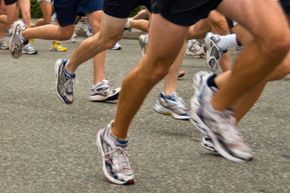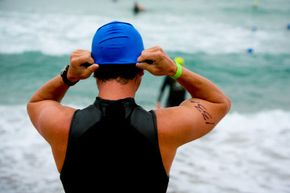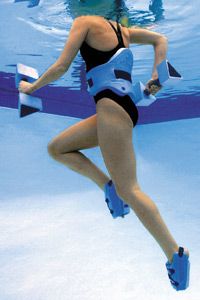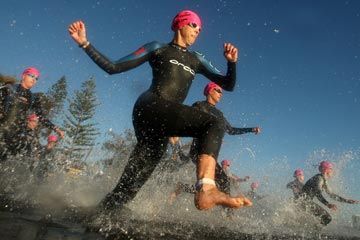"Triathlon 101" author John Mora traces the attraction to triathlon back to being a kid. "Let's jump in the pool! Let's go bike riding! Race you to the corner! In a sense, we all grew up as triathletes" [source: Mora].
For a relatively new sport, the triathlon sparks a special kind of fervor among its competitors. The first Ironman competition, held in 1978, came about when Navy commander John Collins got sick of his swimming, cycling and running buddies bragging about who was the better athlete. Collins challenged his friends to complete three grueling events in a single day: a 2.4-mile (3.86-kilometer) rough water swim; followed by a 112-mile (180.24-kilometer) bike ride around Oahu island; and capped off with a marathon-distance (26.2 miles, or 42.16 kilometers) run. Fifteen men took up the challenge, and on Feb. 18, 1978, Navy man and former pentathlete Gordon Haller became the world's first "Ironman" [source: Mora].
Advertisement
Within a few years, the media got wind of the intense hijinks going on in Hawaii, and in 1982, ABC Sports filmed second-place Ironman finisher Julie Moss as she literally crawled across the finish line in what has been called one of the defining moments in sports history. Soon after, the United States Triathlon Series standardized shorter triathlon distances, opening the sport up to a whole new crop of athletes. In 2000, the Olympic distance triathlon was added to the line-up at the Australian Olympic games.
People get into triathlon for lots of reasons. Bored of pounding pavement, many runners take up the triathlon challenge in order to add variety to their workouts. Triathlons, held outdoors in different conditions, allow track runners and urbanites to get a taste of the trail. They enable pool swimmers to try their strokes in the open sea and off-road bikers to spin their wheels over city streets. Ironman distance triathlons pose an immense challenge to even the most hardened endurance athletes. Meanwhile, with standardized sprint distances, even fitness newbies can get a taste for one of sport's most hardcore challenges. We talk about run training for sprint triathlons in the next section.
Advertisement




